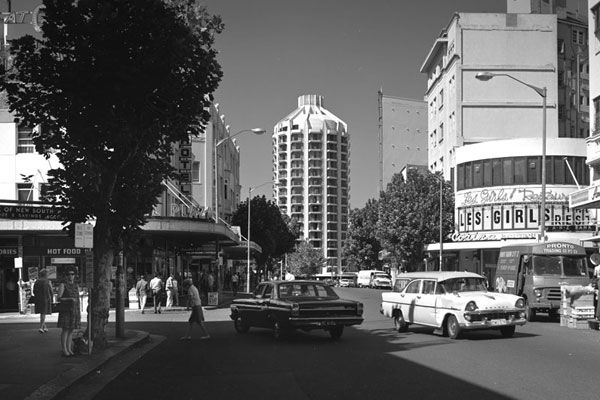
In 1969, the Gazebo Hotel was described as “one of the most spirited additions to the Sydney skyline for some time.”
A Sydney icon of the
International Architectural Style
The Gazebo was designed in the International Style, which had its genesis in 1920s Europe. By the 1960s, its three main principles of structure, plan and functionalism had achieved widespread and enthusiastic adoption in the USA and many other countries, hence its name.
Instead of utilizing a traditional construction system of thick, load-bearing walls, the structures of International Style buildings were light, elegant skeletons of concrete and steel. These allowed larger internal spaces than traditional structures, more flexibility of internal planning and an increase in the area allowed for large amounts of glass in the facade.
Unlike many buildings that preceded them, International Style buildings did not have traditional applied ornamentation. Instead, the sculptural simplicity of a building’s structure and materials became the ‘decoration’. At the Gazebo, it was the combination of the curved columns and balconies, the decorative summit and the materials such as the white marble aggregate finish and the pre-cast panels that gave the building its aesthetic appeal.
Articles
Years before Gazebo Hotel was erected, it was a grand three-storey 19th-century mansion formerly occupied by Cheverells. “Local Landmark: Gazebo Apartment” article 2023.
The Gazebo Hotel Historical Flyers
In addition to its 200 rooms for 500 guests, the Gazebo contained a cocktail bar, “Pavilion” restaurant, coffee terrace and convention room.
*Hotel & Conference Flyer donated by Elizabeth.H *1979 Flyer & Hotel Booklet donated from Napier, New Zealand
At the building’s summit on the 18th floor, guests could enjoy a heated swimming pool and enclosed observation deck which commanded panoramic views over Sydney and the harbour.

In its heyday, the Gazebo saw its share of well-known local and international guests and was used as a setting for film and television productions. The Gazebo ceased operating as a hotel in the late 1990’s and, in 2005, its conversion to apartments was complete.




One of Australia’s best-known photographers, Max Dupain, was commissioned to take photographs of the Gazebo Hotel.